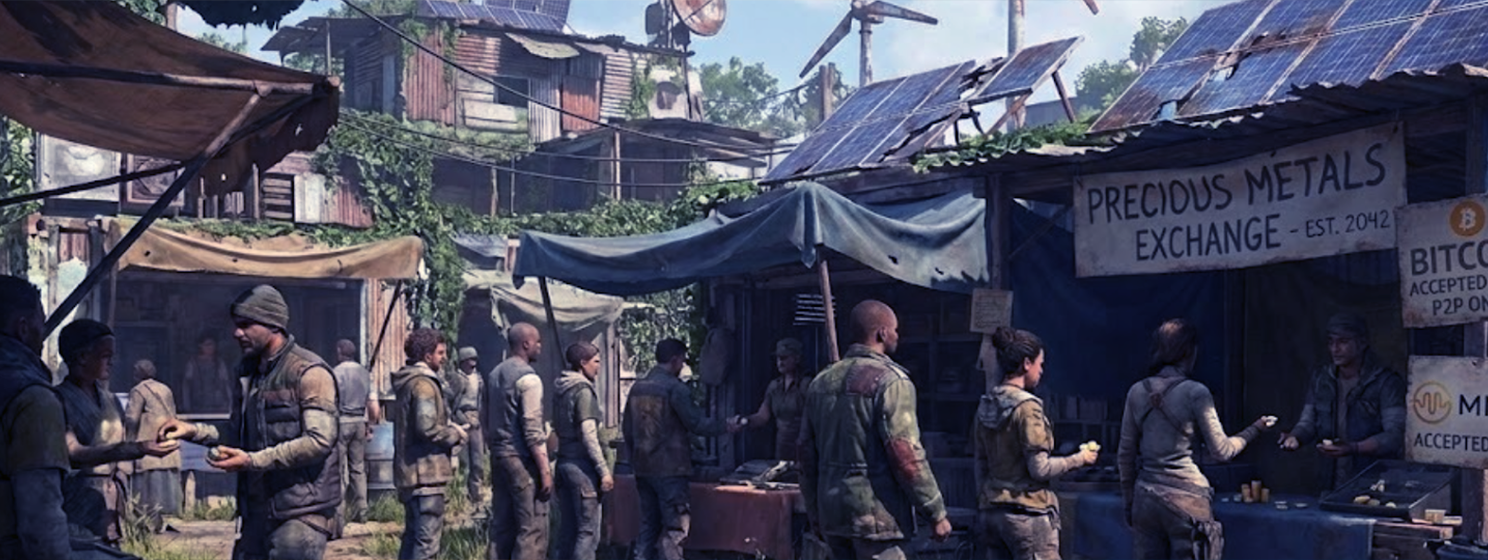|
Getting your Trinity Audio player ready...
|
I’ve spent years sounding the alarm about how Silicon Valley venture capitalists rigged the blockchain game to their own benefit. It started in 2014 with the seeds of the takeover of Bitcoin through MasterCard’s (NASDAQ: MA) venture wing and their affiliates. With a16z, Andreessen Horowitz’s crypto offshoot, things came to full fruition. They made it very clear early on: Ethereum was going to be their playground. They seeded startups that would enhance the Ethereum ecosystem, pushed developers into that tech stack, and hoarded coins from the protocols and/or applications they were propping up. Clever? Absolutely. But it was never about utility. It was about front-running a hype cycle they intended to create and washing it out through various arbitrage games.
In that world, utility is secondary to narrative. These firms aren’t funding builders as much as they’re building a market-making machine. A startup lands on their desk? Push it into the blockchain they already hold, and have them issue a secondary token to play with. That boosts the main coin’s valuation, makes the portfolio startup more valuable on paper, and everyone wins… At least, everyone who holds some equity wins.
But the model is saturated. The hype has faded. And real builders—those of us who actually give a damn about scaling, performance, uptime, and customer value—are looking elsewhere.
That’s what led me to Boulder, Colorado.
Why Boulder?
Boulder doesn’t scream “tech capital” to most people. It’s nestled in the foothills of the Rockies, a college town best known for its outdoorsy charm, countercultural sensibilities, and a strong cup of coffee. But for the last two decades, it’s been quietly punching above its weight as a startup city. And at the heart of that story is Brad Feld.
Brad isn’t your typical Valley VC. He didn’t just ride the dot-com boom. He built before it. He co-founded Feld Technologies in the late 1980s, sold it to AmeriData in 1993, and kept building. When most investors were running from the crash in the early 2000s, he doubled down. He co-founded Mobius Venture Capital and later Foundry Group. And perhaps most notably, he co-founded Techstars in 2006, one of the most influential startup accelerators in the world.
Brad’s thesis has always been different. He believes great companies can be built anywhere, and he backed it up by putting down roots in Boulder. He didn’t chase status. He didn’t need to be seen. He did the work, built the networks, and proved that entrepreneurs don’t have to live in San Francisco to make a dent in the universe.
That philosophy resonates with me.
Because if you’ve been paying attention to my work at CoinGeek, GorillaPool, or any of the BSV builder culture, you know we’re doing the same thing. We’re not playing the VC darling game. We’re solving real problems for real people. And we’re doing it without asking permission.
Despite the headwinds, I still think I am right about Bitcoin despite being very early in the cycle of people understanding the real opportunity.
Meeting Brad
Heading into Boulder, I wasn’t sure what to expect. I’ve met enough tech royalty to know that many play two roles: one for the camera and one behind closed doors. Brad wasn’t that guy.
He showed up the same way he writes: calm, thoughtful, unfazed by hype. He wasn’t sold on any particular blockchain protocol, and that was exactly why I wanted to talk with him. He hasn’t picked his horse yet. He doesn’t need to. He’s not beholden to a bag he needs to pump.
That gave me the rare chance to talk about Bitcoin; not the coin you hold and hope pumps, but Bitcoin the protocol. Bitcoin as a utility network. Bitcoin as a scalable, commercial-grade, enterprise-ready platform that can solve real-world problems if we let it and all while having fun with tokens, apps, and smart contracts just like the other chains! I’m talking about Bitcoin as it was designed by Satoshi and rebuilt on BSV: unbounded, permissionless, and stable.
Brad didn’t flinch. He asked sharp questions, and he listened carefully. Not many people in his position still do that. But Brad’s not most people. He’s a builder at heart. And he respects other builders. He respects vision, but only when it’s married to execution./p>
Part of why I was there was to celebrate the launch of his new book Give First, where he goes into his unique ethos about charity, wealth and defining success as a non-linear experience wherein he sees anyone with any success as a capable participant in mentorship and giving of time and resources.
This is a great parallel to BSV: the chain that has implemented more of Satoshi’s Vision than any other, and has helped inspire lots of other chains, despite not becoming dominant itself (yet).Boulder’s builder culture
What surprised me most about Boulder wasn’t just the people but the culture. There’s a startup ecosystem there that’s refreshingly allergic to nonsense. The entrepreneurs I met weren’t chasing Web3 buzzwords or angling for quick exits. They were focused on revenue. Customers. Product-market fit.
The University of Colorado Boulder plays a huge role in that. Their business school has one of the strongest entrepreneurship programs in the country, and it shows. Students aren’t just learning theory so they can apply it to a pitch deck. They’re building startups that solve real problems. And they’re doing it in a town that celebrates sustainability, practicality, and quiet excellence.
Shreddy’s Tacos was a great example. These guys have been BSV fans and entrepreneurs for a long while, and they’re living proof that you can serve great food, build a loyal customer base, and still be bootstrapping a killer side hustle on technology that actually works. It reminded me that BSV doesn’t need to be sold. It just needs to be shown.
And in Boulder, I got to show it. I had the chance to bring Brad onto the CoinGeek Weekly Livestream and sit down with him in person.
The man you see on his blog or on a panel at a startup event? That’s the same guy you get in conversation. No pretense. No posturing. That kind of authenticity is rare in this space, and I don’t take it lightly.
The takeaway
This wasn’t just a business trip to shoot some media. For me, it was a checkpoint. A reminder that there are still places where ideas matter more than valuation charts.
For years, the narrative around blockchain has been written by people chasing the next hype cycle. But the next chapter? That’s going to be written by those who deliver real value. And that means builders.
Engineers. Entrepreneurs. People who show up, solve problems, and stay for the long haul.
My hope is that Brad sees what I see: a scalable blockchain protocol with the power to change how the world does business. But even if he doesn’t bite, I know the conversation was worth having. Because getting the real Bitcoin in front of real visionaries is how the tide turns.
But more than just a hope, we need to be working on these relationships. Checking in, sending updates, asking for follow-ups with valuable, data-driven client opportunities…
I left Boulder with more than some mountain air and good tacos. I left with renewed vigor. Not the blind kind, but the kind that’s earned. The kind that comes from shaking the hand of someone who’s spent thirty years building and still believes in what’s possible.
That’s what we need more of.
Less moon talk. More missions. More successes.
Watch: Want to develop on BSV? Here’s how you can build with Mandala

 12-11-2025
12-11-2025 





